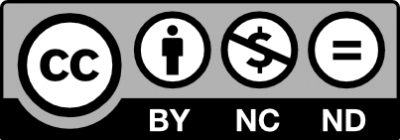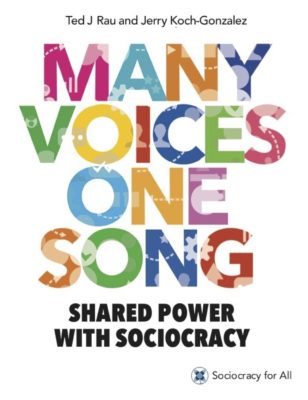Each person is capable of creating harmony, resilience, and responsiveness in themselves and their environment. You yourself can implement the principles and practices of sociocracy, whether you are participating in a sociocratic organization or not. These small changes in your behavior and expectations can make a big difference in the decision-making in any group of people.
1. EXPECT CONSENT
Function as if consent is the standard in decision-making.
When a decision is about to be made, ask if there are any remaining concerns or objections before anyone can call for a vote or declare agreement autocratically. If possible, glance at each person as an invitation to speak. If someone tries to dismiss a concern, say, “Let’s look at this for a moment.” Help clarify and resolve any concerns or objections. Ask if anyone else can do the same.
When unresolved objections remain, emphasize that a decision has not been made. Most small groups function by consent most of the time. With only one objection, however, they may avoid announcing a formal decision and then proceed as if one had been made. The objector will be silent to avoid conflict. Break this cycle and state clearly, “Let’s decide not to implement this until we have enough information to resolve this objection.”
2. INITIATE ROUNDS
Instead of waiting for open discussion, begin rounds by asking, “What does everyone think? Mary?” Then move around the room to each person.
Doing rounds can completely change the dynamic of a group because rounds:
- Establish equality in the room as each person is given time to speak.
- Draw out comments from those who dislike competing for attention or believe their ideas are not important enough to express.
- Prevent people from using silence to avoid responsibility.
- Enable everyone to avoid dominating the discussion.
3. DOUBLE LINK
Suggest that two people with differing styles or opinions represent your group when approaching an authority or attending a meeting.
When two people represent a group as equals, the process of representation is more likely to result in:
- a shift from an individual viewpoint or benefit to collaboration on behalf of the group;
- consultation in a search for solutions, rather than presenting an autocratic decision;
- less likelihood of being co-opted with two listening; and
- more communication and understanding with the experience and knowledge of two people present.
4. ASSIGN TASKS USING DISCUSSION AND CONSENT
Before anyone can volunteer, ask what the role or responsibility requires and then begin directly by asking one person who thinks they could fulfill those requirements. Convey the expectation that there will be more than one qualified person.
A volunteer may not be the best person for the job, and the person who is may not volunteer.
People often recognize abilities in others that others don’t see in themselves.
Self-nominations are acceptable as long as they don’t preclude discussion of other possible candidates or a consideration of the volunteer’s ability to fulfill the task requirements. One ability demonstrated by volunteering, however, is the desire to fulfill the task!
5. ACTIVELY SOLICIT OBJECTIONS
After presenting an idea, welcome objections by asking, “Now how is this going to work? What’s wrong with it? Let’s make it better and get all the chinks out now.”
Resolving objections builds a stronger proposal. Don’t allow concerns and objections to slide away. Taking them seriously builds the commitment and focus necessary for collaborative decision-making and effective action. Even when an objection cannot be resolved, everyone may be more willing to move forward and test the decision if it is thoroughly understood.
6. RESOLVE OBJECTIONS IN THE Group
Treat the objection as an issue the group needs to resolve, not as an attempt to convince the objector privately. Objections should be content-focused and consent is not a bargaining chip as votes are often used in majority vote decisions.
7. MEASURE & REPORT
Build measurements into plans and proposals so you will know if they have accomplished their purposes. If the group doesn’t want to include these in the proposal, keep a list of purposes and measurements yourself, letting everyone know you are doing it and that you would like to bring it back for discussion in a certain number of months. If the group doesn’t consent to a group review, refer to what you have learned when discussing related topics. Share openly. Transparency builds trust and invites more information.
Measurements don’t have to be complicated. Match the amount of data needed to the complexity of the decision. Burdensome measurements may not be kept accurately.
8. Practice & ENCOURAGE SELF-ORGANIZATION
Self-organize by taking control of your assigned or assumed responsibilities. Be self-generating by producing new ideas and solutions. Create a plan for growing personally and professionally. Include learning more about your organization and your industry or profession. Expect the same of others by asking questions that expect a positive answer.
Self-organization is often discouraged, but even in the most-controlled, autocratic workplaces and organizations, there may be small opportunities to take more responsibility and initiative.
Take responsibility for your own development, continuing to learn about your work and your organization.
Sociocracy is based on values and practices that encourage inclusiveness, self-organization, development, productivity, and effectiveness. By applying those values and practices in your daily life, you will create a sociocracy.

Creative Commons License
“Sociocracy for One” is released under the Creative Commons License. It may be reused with attribution, shared with others, and transformed as the basis of another document, but it is not released for commercial use without specific prior permission. For permission, please contact Sharon Villines at Sociocracy.info.

